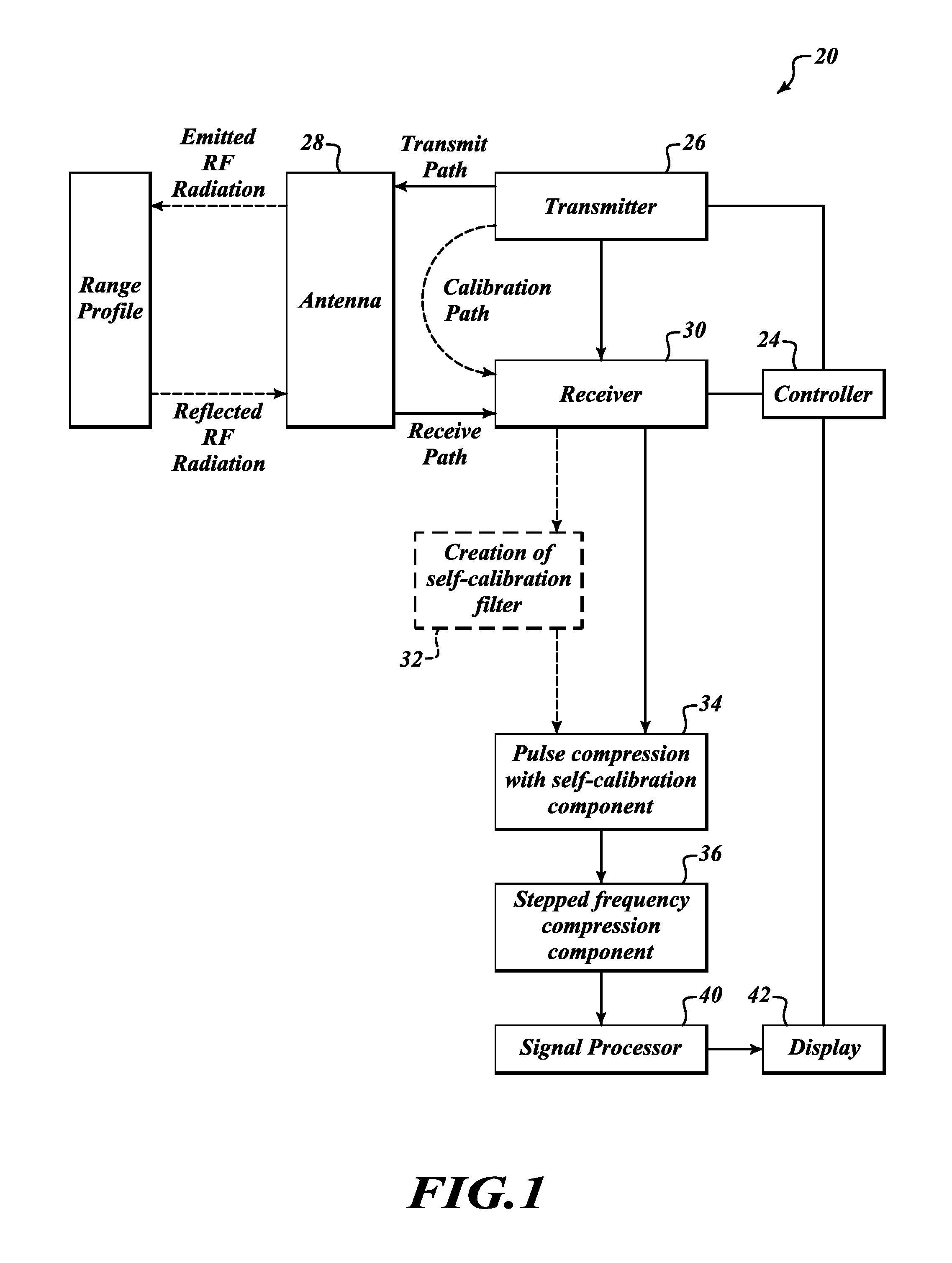Marine radar systems and methods
a radar system and radar technology, applied in the field of marine radar systems and methods, can solve the problems of unwanted artifacts and cluttered radar display, and achieve the effects of improving range resolution, reducing noise, and improving sensitivity
- Summary
- Abstract
- Description
- Claims
- Application Information
AI Technical Summary
Benefits of technology
Problems solved by technology
Method used
Image
Examples
Embodiment Construction
[0015]FIG. 1 is a block diagram of an exemplary embodiment of a marine radar system 20. The system 20 includes a controller 24, a transmitter 26, an antenna 28, a receiver 30, signal calibration and compression components (32, 34, 36), a signal processor 40, and a display device 42.
[0016]The transmitter 26 generates and emits a radar waveform signal as directed by controller settings. The antenna 28 directs the signal generated by the transmitter 26. The antenna 28 is swept such that the system is able to detect objects in an area of interest about the installation. A radar return is reflected energy from an object upon which the emitted radar pulse is incident on. The received radar returns are communicated to the receiver 30.
[0017]The marine radar transmitter 26 generates a non-linear frequency modulation (NLFM) stepped frequency sub-pulse and transmits it via the antenna 28. Reflections are detected by the receiver 30, calibrated and pulse compressed in the module 34, and stored ...
PUM
 Login to View More
Login to View More Abstract
Description
Claims
Application Information
 Login to View More
Login to View More - R&D
- Intellectual Property
- Life Sciences
- Materials
- Tech Scout
- Unparalleled Data Quality
- Higher Quality Content
- 60% Fewer Hallucinations
Browse by: Latest US Patents, China's latest patents, Technical Efficacy Thesaurus, Application Domain, Technology Topic, Popular Technical Reports.
© 2025 PatSnap. All rights reserved.Legal|Privacy policy|Modern Slavery Act Transparency Statement|Sitemap|About US| Contact US: help@patsnap.com



